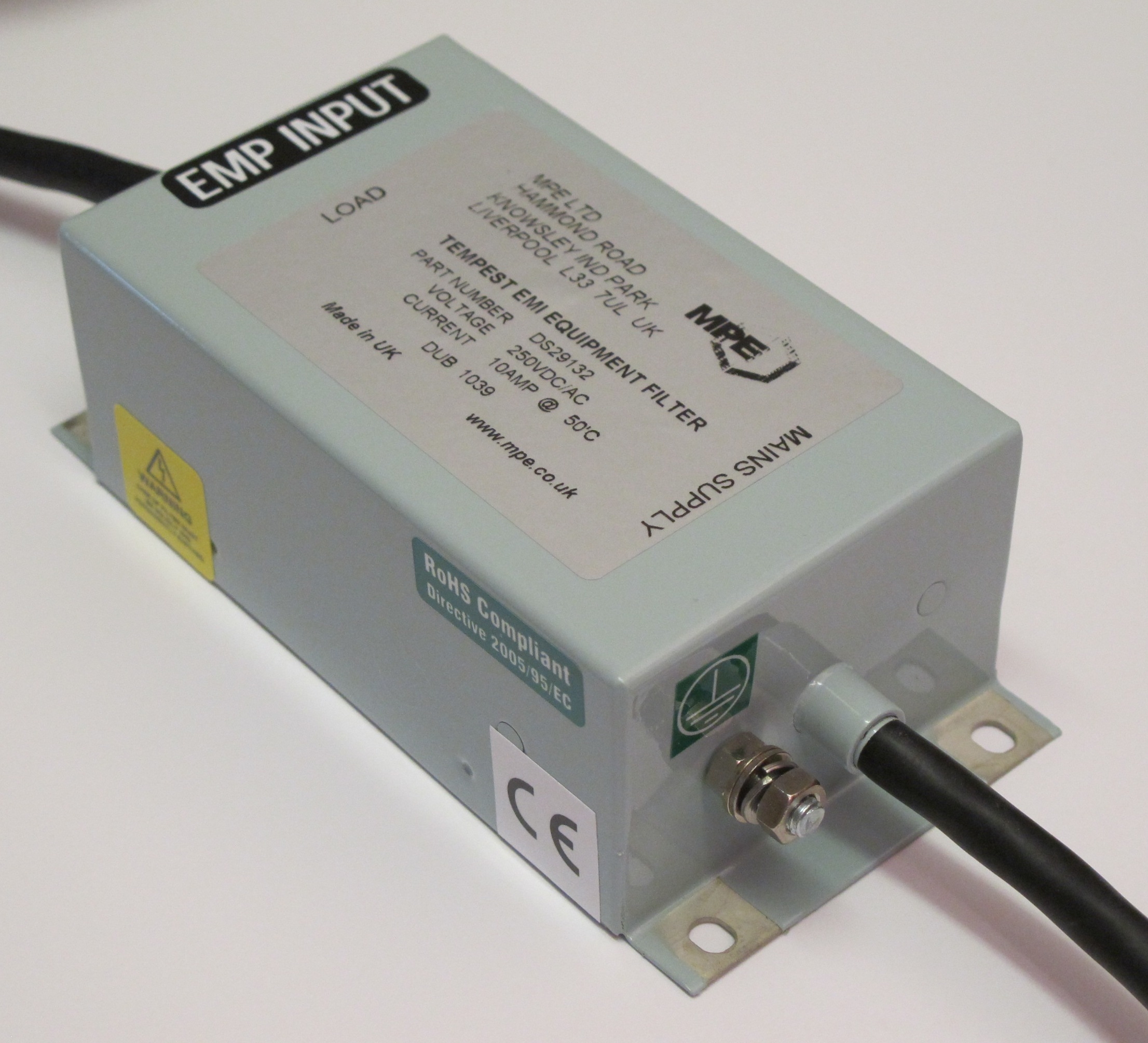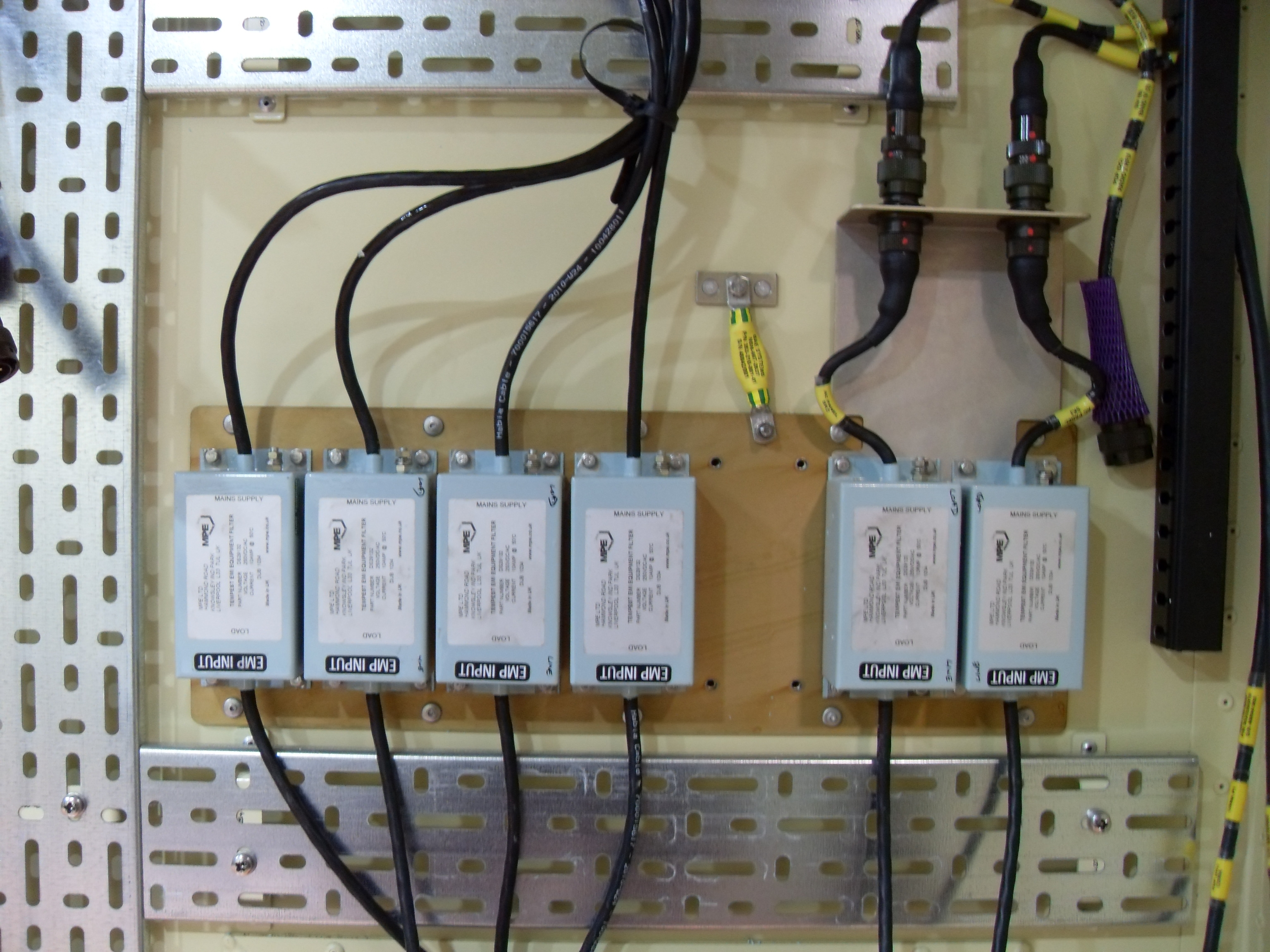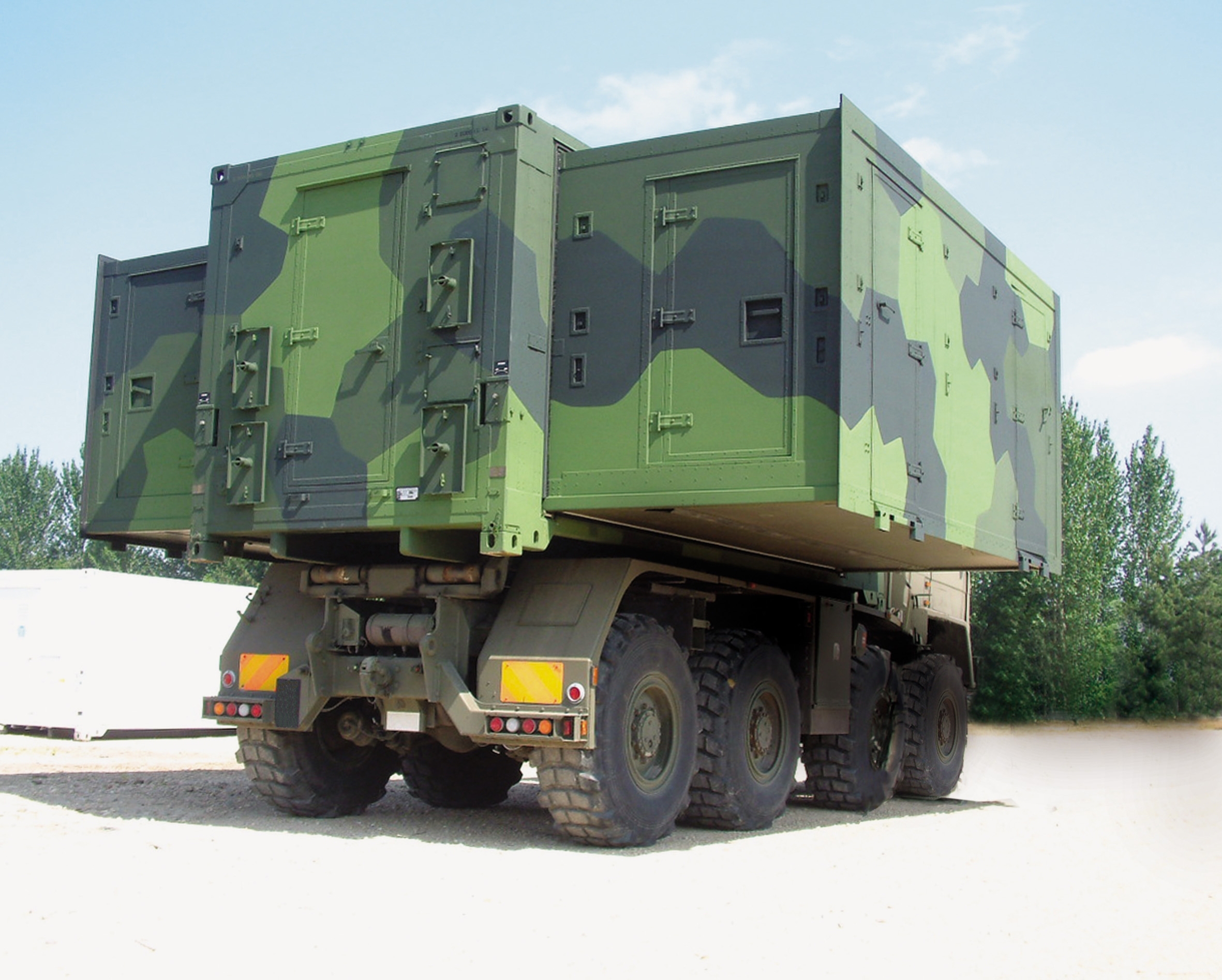Safeguarding vulnerable electronics in war zones
Fixed and mobile tactical shelters in war zones enhance a military commander’s ability to mobilise, deploy, manoeuvre and sustain forces. Fixed means housed in a permanent structure, whereas mobile denotes a unit that is transportable and deliverable.
Fixed means housed in a permanent structure, whereas mobile denotes a unit that is transportable and deliverable.
Rapidly deployed to fulfil versatile applications in support of the increasingly complex defence operations of the 21st century, mobile shelters in steel or lightweight aluminium alloy are designed to have a high strength-to-weight ratio. They range from small, trailer-mounted types through 20ft ISO containers positioned by crane or forklift to the largest internal airlift slingable container unit (or ISU), moved into position, typically by a Chinook helicopter. Containers may also be vehicle-mounted, as with the Cormorant and Falcon communications systems for the British Army.
All shelters are vulnerable to electromagnetic threats where they may house C4ISTAR (Command, Control, Communications, Computers, Information / Intelligence, Surveillance, Target Acquisition and Reconnaissance) battlefield management technologies. In practical terms, this means computer systems, telecommunications and radar, power supplies and portable electronic devices.
Figure 1: A TEMPEST EMI filter, one of three main types of COTS, line protection filter designs used in tactical shelters
Strategic success and, most importantly, lives depend upon whether C4ISTAR equipment systems function smoothly, unaffected by electromagnetic threats and data interception amid the turmoil of battle. High performance EMI filters play a vital role in providing a benign electromagnetic environment in which the equipment can operate correctly. The performance of the EMI filters coupled with the shielding effectiveness of the shelter are designed to reduce conducted and radiated electrical interference to an acceptable level. Whilst all applications require a certain level of continuous wave filtering, some additionally require transient pulse protection.
Security threats
The three chief types of COTS, line protection filter designs used in tactical shelters are for TEMPEST (Transient Electromagnetic Pulse Emanation Standard), EMP (Electromagnetic Pulse) and HEMP (High-Altitude Electromagnetic Pulse) applications. They are typically bulkhead-mounted at all cable entry points on the inside or outside wall of a shelter to protect the incoming mains supply to equipment. Additional filters are often installed on racks inside the shelter to provide extra equipment level protection and to prevent inter-equipment interference (Figure 1).
Figure 2: MPE TEMPEST EMI equipment filters installed in a battlefield enclosure
Aimed at information security, filters for TEMPEST, prevent eavesdropping on data radiated as signals from computers and peripherals via conducting lines (such as power, telephone or control line cables). These signals may be intercepted by an enemy’s intelligence services. For instance, a classified signal from a laptop inadvertently picked up and transmitted down an unprotected telephone line could potentially be accessed by intercepting the telephone cable many miles away. Equally vulnerable are incoming power cables.
Filter standards
The accepted industry standard for TEMPEST EMI filter performance is 100dB in a frequency range from 14kHz to 10GHz, with a secondary level of protection of 60dB from 100kHz to 1GHz on individual pieces of equipment within a given shelter. This may call for power, data, telephone and control line filters to cover all systems at risk.
The performance of EMP filters has traditionally been accepted as 60dB at 10kHz rising to 80dB from 100kHz to 1GHz. All lines in these multi-line systems feature high-energy transient suppressors, such as varistors, spark gaps or silicon avalanche diodes, at the input end. Each transient suppressor has to give an ultra high-speed response to arrest the incoming pulse. The purpose of this front-end transient suppressor (primary protector) is to shunt the bulk of the pulse energy to earth. Secondary and tertiary protection may be provided by further transient suppressors fitted at later stages of the filter to help further reduce the remaining pulse voltage to a safe level. To provide delay to the incoming pulse, filtering components are either mounted at a distance from the primary protector or separated by a discrete inductor.
Figure 3: Mobile tactical shelters need EMC and EMP filtering
As well as delivering EMI/RFI protection in compact form at all electrical access points, well designed EMP filters provide minimum heat dissipation and leakage current as well as minimum size and weight which are critical within mobile shelter applications. Internal filter components (capacitors and inductors) are extremely reliable and are expected to last for several decades without anything more than cursory maintenance. The ongoing integrity of the transient suppression components should be checked periodically, and the filter enclosures are designed to make maintenance and replacement of these devices easy, should the need arise.
A sub-category of EMP, HEMP (High-altitude ElectroMagnetic Pulse filters safeguard equipment systems against the effects of nuclear blasts high in the atmosphere. The EMP caused by such an event could knock out military computer and communications networks as well as civil and commercial infrastructure.
For example, the intense electromagnetic pulse created by a nuclear blast more than 25 miles up could disable, damage or destroy electrical power supply networks, unprotected items of electrical equipment and electrical controls for key service industries over a wide area of the earth’s surface. Any equipment containing microchips would be particularly vulnerable and would be damaged or destroyed in a fraction of a second. A solar flare or geomagnetic storm, over which we have no control but which will inevitably happen from time to time, could produce a similar catastrophic result.
Tests show that purpose-designed HEMP power filters are far more effective than adapted EMI catalogue filters in terms of performance, size and weight. The latest HEMP specifications, MIL-STD 188-125 Parts 1 and 2 and DEF STAN 59-188 have no stated insertion loss requirement, but it is accepted that the value should be 20dB at 10kHz rising to 80dB in the frequency range 10MHz to 1GHz, in order not to compromise the required shielding effectiveness.
The multiplicity of applications, specifications and conditions for TEMPEST, EMP and HEMP installation filters point towards few manufacturers in the world. If standard, high-performance COTS designs do not fit the bill in all respects, MPE will customise its filter products to suit the parameters of the application.
There is an increasing need for tactical shelters with the introduction into theatres of war of ever more advanced C4ISTAR facilities, and with that comes the necessity for sophisticated EMC and EMP filtering to safeguard their vulnerable – and vital – electronics.













